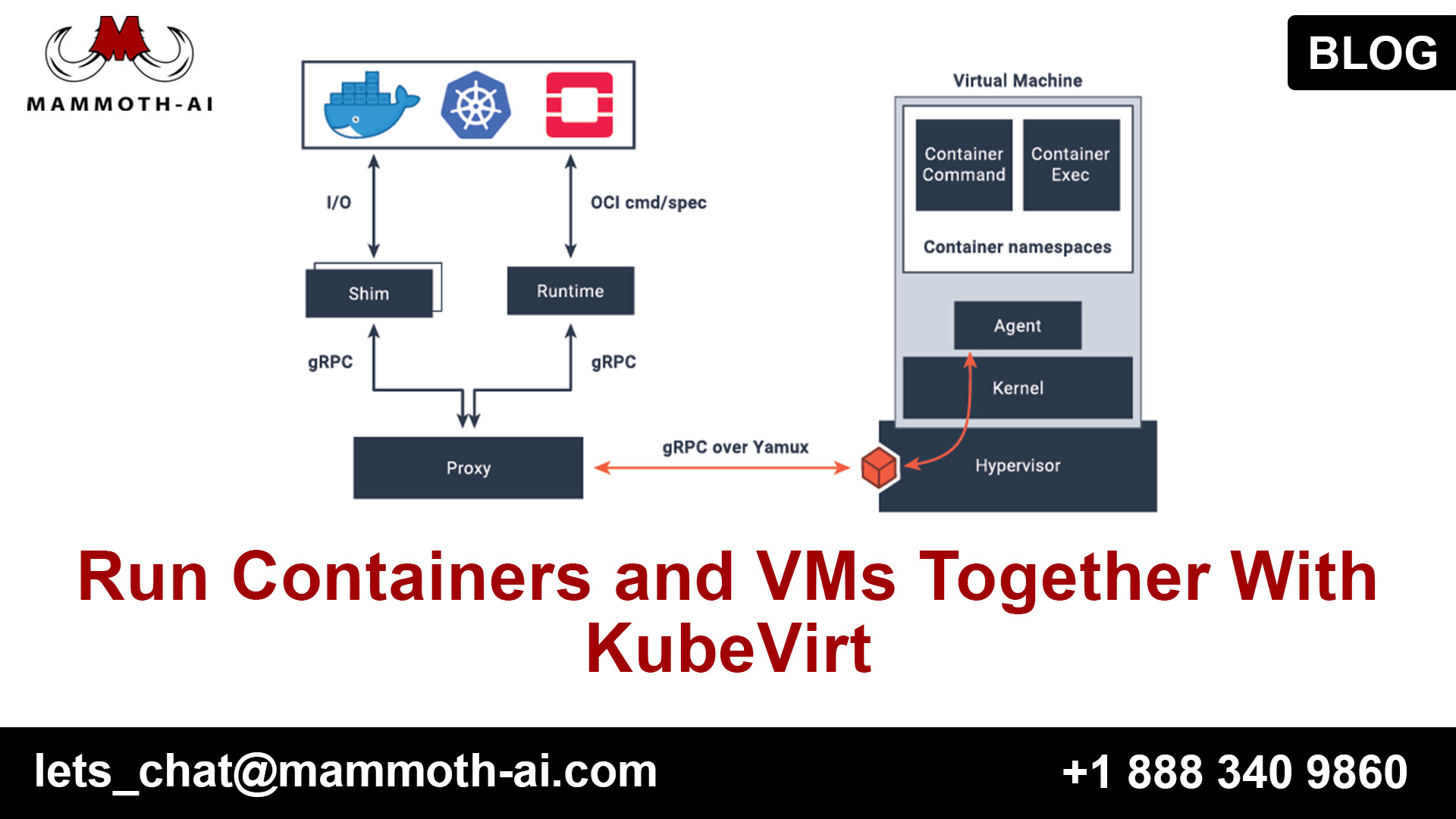Despite the fact that many businesses have implemented Kubernetes and containers, the majority also run virtual machines. As a result, the two environments will almost certainly coexist for years, adding operational complexity and time and infrastructure costs.
Without diving into the advantages and disadvantages of each, keep in mind that each virtual machine (VM) has its own version of a full operating system and is designed to function as an independent server—hence the term. In a containerized environment, on the other hand, several containers share a single instance of an operating system, which is nearly often Linux.
Because not all application services perform effectively in containers, both must be used.
For LDAP/Active Directory apps, tokenization applications, and applications with high GPU requirements, a VM is preferable to a container. You might also have a legacy application that can’t be modernized for various reasons (lack of source code, licensing, deprecated language, etc.) and must be executed in a virtual machine, possibly against a specific OS like Windows.
Running and managing numerous environments increases the complexity of your operations, needing distinct control planes and possibly separate infrastructure stacks, regardless of why your application requires VMs or containers. If you only require one or a limited number of VMs to support a single instance of an otherwise containerized application, this may not seem like a significant concern. But what if you have a lot of these apps? What if you need to run numerous instances of those programs in various cloud environments? Your activities can quickly become exceedingly intricate.
Wouldn’t it be fantastic if you could run VMs alongside your Kubernetes cluster?
KubeVirt makes it possible for you to accomplish just that. In this blog, I’ll explain what KubeVirt is, what it can do for you, and how to integrate it so you can get started utilizing it right away.
What Is KubeVirt?
KubeVirt is a Kubernetes add-on for provisioning, managing, and controlling virtual machines on the same infrastructure as containers. KubeVirt is an open-source project currently in the incubation phase under the aegis of the Cloud Native Computing Foundation (CNCF).
This technology allows Kubernetes to schedule, deploy, and manage virtual machines using the same tools as containerized workloads, removing the need for a separate environment with specialized monitoring and management tools. With VMs and Kubernetes operating together, you get the best of both worlds.
WIth KubeVirt, you can declaratively:
- Create a VM
- Schedule a VM on a Kubernetes cluster
- Launch a VM
- Stop a VM
- Delete a VM
Your VMs run inside Kubernetes pods and utilize standard Kubernetes networking and storage.
What Are the Benefits of KubeVirt?
KubeVirt integrates with existing Kubernetes tools and practices such as monitoring, logging, alerting, and auditing, providing significant benefits including:
- Centralized management: Manage VMs and containers using a single set of tools.
- No hypervisor tax: Eliminate the need to license and run a hypervisor to run the VMs associated with your application.
- Predictable performance: KubeVirt uses the Kubernetes CPU manager to pin vCPUs and RAM to a VM for workloads that require predictable latency and performance.
- CI/CD for VMs: Develop application services that run in VMs and integrate and deliver them using the same CI/CD tools for containers.
- Authorization: KubeVirt comes with a set of predefined RBAC ClusterRoles that can be used to grant users permissions to access KubeVirt Resources.
Centralizing VM and container management streamlines your infrastructure stack while also providing a number of less obvious benefits. By eliminating the need for separate VM and container pipelines, KubeVirt minimizes the stress on your DevOps teams, speeding up daily operations. You can also save money on software and utilities as you migrate more VMs to Kubernetes, not to mention the hypervisor tax. By exploiting Kubernetes’ ability to package and schedule virtual apps, you may reduce your infrastructure footprint in the long run.
Kubernetes with KubeVirt allows for a quicker time to market, lower costs, and easier management. Kubernetes can help you streamline your virtualized and containerized application’s CI/CD process by automating VM lifecycle management. Changes in any type of application may be similarly evaluated and reliably deployed with Kubernetes as an orchestrator, lowering the risk of manual errors and enabling rapid iteration.
KubeVirt: Challenges and Best Practices
When deploying KubeVirt, there are a few things to bear in mind. One of the reasons you would want to run a VM instead of a container, as I indicated earlier, is for specialized hardware like GPUs. If this applies to your workload, make sure at least one node in your cluster has the required hardware, and then pin the pod holding the VM to the node(s) that have it.
Managing KubeVirt when you have a fleet of clusters—possibly running in numerous, diverse environments—becomes more complicated, as it does with every Kubernetes add-on. It’s critical to make sure that technology is installed consistently across clusters and may be adapted to the hardware available.
Finally, Kubernete’s expertise is scarce. Understanding and editing YAML configuration files are usually required when running a VM on KubeVirt. From developers to operators, you’ll need to make sure that everyone who needs to deploy VMs on KubeVirt has the necessary skills and tools.
For more info: https://www.qaaas.co.uk/testing-services/
Also Read: https://www.guru99.com/software-testing.html


